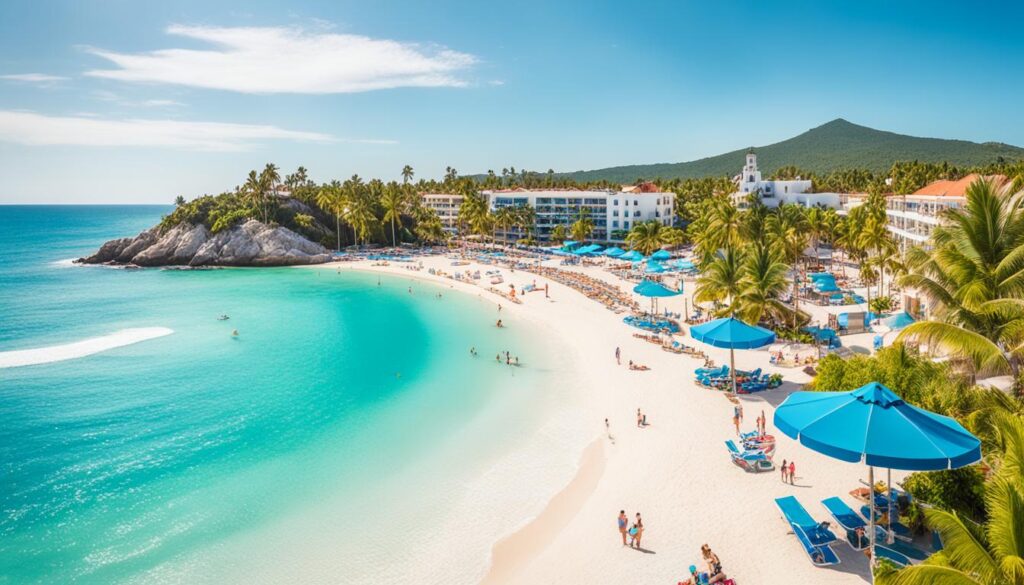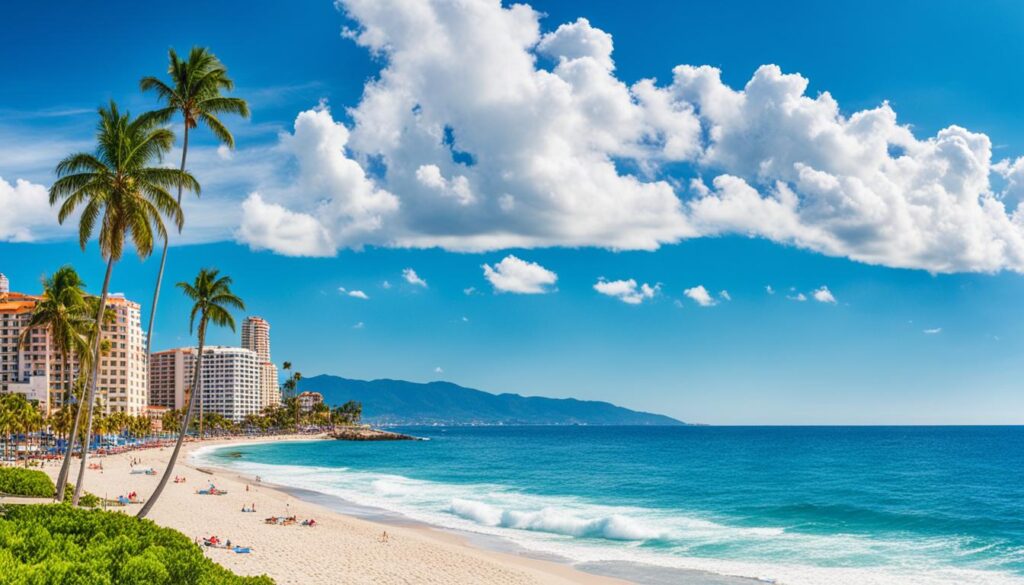I am a participant in the Amazon Services LLC Associates Program, an affiliate advertising program designed to provide a means for sites to earn advertising fees by advertising and linking to Amazon.com and affiliated sites. Privacy Policy
What’s the weather like in Mexico during School vacations in the united states?
Are you planning a trip to Mexico during school vacations in the United States? It’s important to know what the weather will be like in your chosen destination. Whether you’re looking for sunny days on the beach or cooler temperatures for exploring historic sites, understanding the climate conditions can help you make the most of your trip. So, what can you expect when it comes to Mexico’s weather during American school breaks? Let’s find out.
The Best Time to Visit Mexico
If you’re planning a trip to Mexico, it’s important to consider the best time to visit based on weather conditions. Mexico experiences distinct seasons throughout the year, each offering its own unique travel experience. Understanding the different seasons and their characteristics will help you plan a memorable vacation. Here’s a breakdown of Mexico’s weather season and the best time to visit:
Dry Season (December to April)
The dry season, from December to April, is considered the best time to visit Mexico. During this period, the country experiences minimal rainfall and comfortable temperatures, ranging from 70°F to 85°F. The dry season coincides with the school vacations in the United States, making it the peak travel season. It’s an ideal time to explore popular destinations such as Cancun, Mexico City, Cabo San Lucas, and Tulum. The weather is generally sunny and perfect for outdoor activities, beach visits, and exploring historical sites.
Wet Season (May to October)
The wet season in Mexico begins in May and lasts until October. This period is characterized by increased humidity and a higher chance of rain. The temperatures during the wet season range from 75°F to 95°F. While the wet season can bring occasional rain showers, it also offers its own charm, with lush green landscapes and fewer crowds. It’s important to note that the Caribbean coast, including Cancun and Tulum, is also affected by the hurricane season from June to November. If you plan to visit during the wet season, it’s advisable to check the local forecast and be prepared for possible rain showers.
Mexico Weather by Region
Mexico’s weather varies by region, offering diverse climatic conditions across the country. Here’s an overview of the weather in different regions:
| Region | Weather |
|---|---|
| Northern Mexico | Hot and dry weather during the day, with colder nights in cooler months. |
| Central Mexico | Warm or hot weather during the day, with cooler evenings, especially in highland cities. |
| Southern Mexico & Yucatan Peninsula | Similar climate to central Mexico, but hotter and more humid as you travel deeper into the south and the Yucatan Peninsula. |
| Baja California Peninsula | Hot deserts inland and cooler temperatures near the coast. |
Best Wireless Portable Charger Buy Here
It’s crucial to take these regional variations into account when planning your trip to Mexico.
Whether you prefer to visit during the dry season for optimal weather or embrace the lush landscapes of the wet season, Mexico offers something for every traveler throughout the year. Remember to check the local forecast for your chosen destination before you go and pack accordingly. Enjoy your trip to Mexico!

Mexico Weather Guide by Region
When planning a trip to Mexico, it’s important to consider the weather conditions in different regions of the country. Mexico’s climate varies significantly from one region to another, offering a diverse range of weather patterns and temperatures. Here is a comprehensive Mexico weather guide by region to help you make informed travel plans:
1. Northern Mexico
Northern Mexico is known for its desert climate, characterized by hot and dry weather during the day. However, temperatures can drop significantly during the cooler months, sometimes reaching freezing temperatures overnight. It’s advisable to pack layers and prepare for temperature fluctuations.
2. Central Mexico
Central Mexico enjoys warm or hot weather during the day, making it a popular destination for travelers. However, evenings can be cooler, especially in the highland cities. It’s recommended to bring a light jacket or sweater for cooler nights.
3. Southern Mexico and the Yucatan Peninsula
Southern Mexico, including the Yucatan Peninsula and Mexico City, shares a similar climate with central Mexico. However, as you travel further south, temperatures tend to get hotter and more humid. It’s important to be prepared for high humidity levels and pack lightweight and breathable clothing.
4. Baja California Peninsula
The Baja California Peninsula experiences a mix of climates. Inland areas of the peninsula are characterized by hot desert conditions, while temperatures near the coast are generally cooler. It’s advisable to check the specific forecast for your chosen destination to pack accordingly.
In conclusion, the weather in Mexico varies significantly by region. From the hot deserts of northern Mexico to the humidity of southern Mexico and the Yucatan Peninsula, each region offers a unique climate and weather experience. When planning your trip, consider the specific region you’ll be visiting and pack accordingly. Checking the weather forecast for your destination is always recommended to ensure you are prepared for the conditions you’ll encounter during your time in Mexico.
Weather in Popular Mexican Destinations During School Vacations
The weather in popular Mexican destinations during school vacations can vary. In March, Cancun experiences warm and sunny weather, with average temperatures around 85°F during the day and 70°F at night. Mexico City tends to be cooler in March, with mild temperatures during the day and cooler nights, so it is advisable to pack layers. Cabo San Lucas has warm weather in March, with average temperatures around 87°F during the day and 70°F at night.
Tulum, Oaxaca, Riviera Maya, Puerto Vallarta, Playa del Carmen, Puerto Escondido, and Cozumel also have warm temperatures in March, making them ideal beach destinations during school vacations in the United States. It is important to check the specific forecast for your chosen destination as weather conditions can vary.

Weather Comparison in Popular Mexican Destinations in March
| Destination | Average Daytime Temperature | Average Nighttime Temperature |
|---|---|---|
| Cancun | 85°F | 70°F |
| Mexico City | Mild temperatures | Cooler nights |
| Cabo San Lucas | 87°F | 70°F |
| Tulum | Warm temperatures | – |
| Oaxaca | Warm temperatures | – |
| Riviera Maya | Warm temperatures | – |
| Puerto Vallarta | Warm temperatures | – |
| Playa del Carmen | Warm temperatures | – |
| Puerto Escondido | Warm temperatures | – |
| Cozumel | Warm temperatures | – |
Mexico March Holidays and Events
If you’re planning a trip to Mexico during the month of March, you’ll have the opportunity to experience several delightful holidays and events. These festivities add an extra charm to your visit and provide a unique cultural experience. Here are some of the key holidays and events in Mexico during March:
Benito Juarez Day in Mexico
On the third Monday of March, Mexico celebrates Benito Juarez Day. This national holiday honors the memory of Benito Juarez, a former Mexican president. It is a day when many people have the day off from work or school, allowing them to participate in various celebrations and events. During this time, you can immerse yourself in Mexican history, attend parades, and visit museums dedicated to Benito Juarez’s legacy.
Spring Break in Mexico
March is synonymous with Spring Break in Mexico, attracting hordes of college students from the United States seeking a memorable vacation. Popular beach destinations like Cancun, Tulum, Los Cabos, and Ensenada become vibrant hubs of activity, offering an exciting combination of beach parties, water sports, and mesmerizing nightlife. Whether you prefer lounging on pristine beaches or dancing the night away, Spring Break in Mexico guarantees an unforgettable experience.
Spring Equinox in Mexico
March 20 marks the arrival of the Spring Equinox in Mexico, a significant celestial event celebrated at the Chichen Itza Mayan Ruins. Visitors gather to witness an awe-inspiring spectacle as the sun casts a shadow on the side of El Castillo Pyramid, creating an illusion of a descending serpent. This event holds immense cultural and spiritual significance and attracts tourists from around the world, adding a touch of mysticism to your Mexico trip.
“When planning your trip to Mexico in March, be sure to immerse yourself in the rich history and vibrant celebrations of Benito Juarez Day, enjoy the energetic atmosphere of Spring Break, and marvel at the celestial magic of the Spring Equinox at Chichen Itza.”
These holidays and events contribute to the lively ambiance and cultural diversity that Mexico offers during March. Whether you’re seeking historical insights, thrilling festivities, or a blend of both, Mexico’s March holidays and events provide the perfect opportunity to experience the country’s vibrant spirit.

Conclusion
When planning a trip to Mexico during school vacations in the United States, it is important to consider the weather conditions in different regions of the country. The best time to visit Mexico is during the dry season from December to April, when there is minimal rainfall and comfortable temperatures.
The weather in Mexico varies by season and by region, so it is recommended to check the local forecast for your chosen destination. Popular Mexican destinations such as Cancun, Mexico City, Cabo San Lucas, Tulum, Oaxaca, Riviera Maya, Puerto Vallarta, Playa del Carmen, Puerto Escondido, and Cozumel offer warm weather in March, making them great options for beach vacations.
It is also worth considering any holidays or events that may be taking place during your visit. Plan ahead and pack accordingly to make the most of your trip to Mexico during school vacations in the United States.
FAQ
What’s the weather like in Mexico during school vacations in the United States?
The weather in Mexico during school vacations in the United States varies depending on the season and the region. The best time to visit Mexico is during the dry season from December to April when there is little to no rain. The coolest months are December to February, but temperatures can still reach an average of 82°F. The wet season begins in May and lasts until October, with increased humidity and a higher chance of rain. The Caribbean coast can be affected by the hurricane season from June to November. It is advisable to check the local forecast for your specific destination as the weather can vary across the country.
What is the best time to visit Mexico?
The best time to visit Mexico is during the dry season from December to April when there is minimal rainfall and comfortable temperatures. This is considered the peak travel season, especially during the school vacations in the United States. The wet season begins in May and lasts until October, with increased humidity and a higher chance of rain. The Caribbean coast is also affected by the hurricane season from June to November, so it is important to consider this when planning your trip. The weather in Mexico varies by season and by region, so it is recommended to check the local forecast for your chosen destination.
How does the weather in Mexico vary by region?
The weather in Mexico varies by region. Northern Mexico is a desert region with hot and dry weather during the day, but temperatures can drop to freezing overnight in cooler months. Central Mexico has warm or hot weather during the day, but evenings can be cool, especially in the highland cities. Southern Mexico, including Mexico City, has a similar climate to central Mexico, but it gets hotter and more humid as you travel deeper into the south and the Yucatan Peninsula. The Baja California Peninsula experiences hot deserts inland and cooler temperatures near the coast. It is important to consider the region you are visiting when planning for the weather in Mexico.
What is the weather like in popular Mexican destinations during school vacations?
In March, Cancun experiences warm and sunny weather, with average temperatures around 85°F during the day and 70°F at night. Mexico City tends to be cooler in March, with mild temperatures during the day and cooler nights, so it is advisable to pack layers. Cabo San Lucas has warm weather in March, with average temperatures around 87°F during the day and 70°F at night. Tulum, Oaxaca, Riviera Maya, Puerto Vallarta, Playa del Carmen, Puerto Escondido, and Cozumel also have warm temperatures in March, making them ideal beach destinations during school vacations in the United States. It is important to check the specific forecast for your chosen destination as weather conditions can vary.
Are there any holidays or events in Mexico during March?
There are several holidays and events in Mexico during the month of March. Benito Juarez Day is a national holiday celebrated on the third Monday in March to honor former Mexican President Benito Juarez. Many people have the day off from school or work, and some businesses may be closed. Spring Break is another major event in Mexico during March, with many college students from the United States visiting popular beach destinations like Cancun, Tulum, Los Cabos, and Ensenada. The Spring Equinox, which falls on March 20, is celebrated at the Chichen Itza Mayan Ruins, where the sun casts a shadow on the side of El Castillo Pyramid, resembling a descending serpent. These holidays and events can impact tourism and the overall atmosphere in Mexico during March.
I am a participant in the Amazon Services LLC Associates Program, an affiliate advertising program designed to provide a means for sites to earn advertising fees by advertising and linking to Amazon.com and affiliated sites. Privacy Policy
